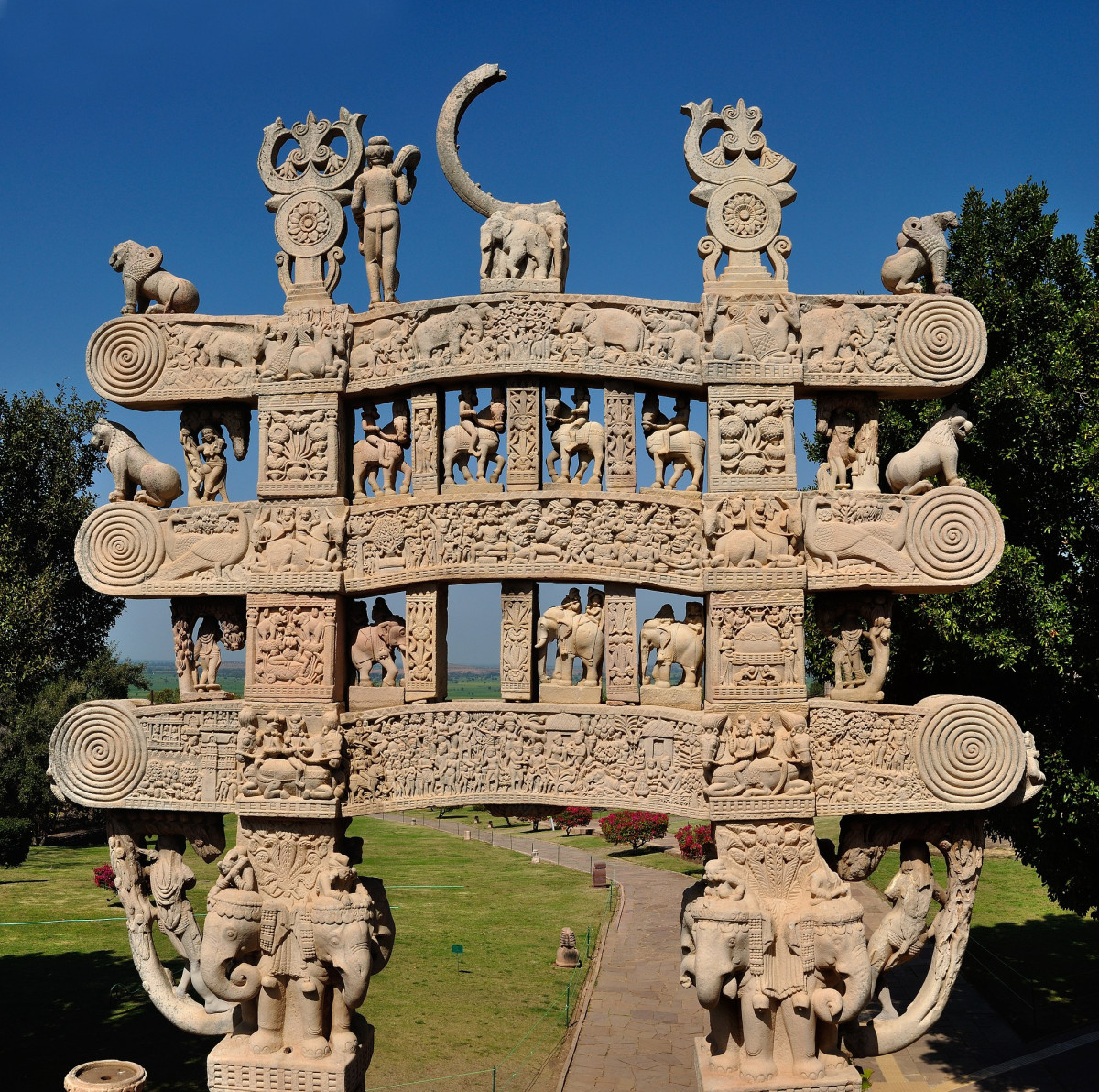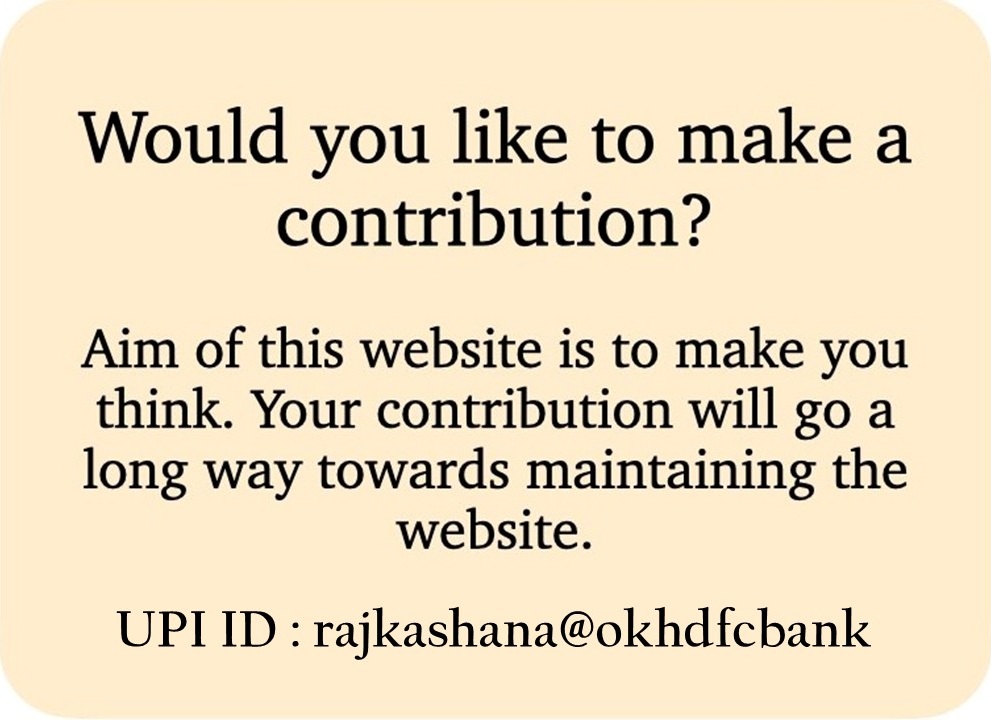History has always fascinated me. Golden age of India in the first millennium going back to Buddha in the fifth century b. c., writing of the Vedas around 1500 b.c., starting of agriculture around 10,000 b.c., Homo sapiens dating back to 300,000 years, the Jurassic period 201.4 million years ago, first signs of life around 3.8 billion years ago or the Big Bang 13.78 billion years ago – it is fascinating to study each period and see how it all connects. As we travel back in time, history crosses over to archeology which then becomes biology with a side of genetics; chemistry steps in hand-in-hand with geology travelling at high speed to cosmology to reach the ultimate destination of physics. If you are wondering where mathematics fits into all of this, physics runs its super fast trains on the rail lines built by mathematics; hence the eternal competition between physicists and mathematicians about which discipline is superior.
While it is greatly satisfying to delve deeper into one subject – that’s what scientists all over the world do for a living and I also tried it for a while – there is another approach. Go just deep enough into various topics, then zoom out and try to find connections. I find this second approach great fun and immensely satisfying.
I have been reading about the period when the Vedas and the Upnishads were written. One of the biggest questions I ponder over is how did they write? By the way, the Vedas were written by anonymous Rishis (sages) and the word ‘written’ is not to be taken literally. They composed the verses and passed them on through the generations by memorizing them. The Vedas are meant to be sung.
I have the latest technology at my fingertips and a universe of knowledge practically free aided by a plethora of writing tools and yet I struggle to write even a thousand words. The Rishis had nothing; no libraries, no computers, and no writing assistants. And yet they came up with totally original thoughts and ideas that are as useful even today. How did they do it?
Of course, I don’t have a definitive answer but thinking about this question led me to think about the lifestyle of the Rishis and that revealed some very interesting points. And it seems that modern science is slowly catching up with it.
First, the Rishis took completely unprocessed food because ultra-processed food had not been invented yet. They did not eat bread that does not go bad for months. They ate mainly fruits, vegetables, beans, legumes, lentils etc. so the requirement of eating 30 plants a week was easily met. (Studies have shown that a diet of 30 plants per week is optimal for keeping your gut microbiome healthy.) As a result, their gut microbiome must have been in a top-notch condition and this resulted in better creativity, better immune system, and superior brain activity. We are just beginning to understand the effects of the gut-brain barrier.
They practiced Yoga and meditated regularly. We are realizing the benefits of these activities today. Yoga keeps the body flexible, blood pressure under control along with host of other benefits. Studies from MRI scans have proved benefits of meditation in reducing stress thereby reducing cortisol levels . They also practiced breathing exercises known as the Pranayama, that forms an integral part of Yoga. Controlled breathing exercises raise adrenaline levels and boost the immune system.
The Rishis lived on mountains surrounded by forests. Naturally, they had to walk a lot everyday. Walking has been proven beneficial for creativity and it also must have provided them with a good cardio workout. Chores such as chopping wood or carrying water were excellent strength training exercises. Many of the Rishis were also warriors and practicing their weapons regularly added discipline to their routine.
A major part of the daily routine of these Rishis comprised of reciting the verses in Sanskrit. Since the did not write them down, memorising them by heart was the only way to retain them. The four Vedas contain > 20,000 mantras and shlokas (approximately 50,000–100,000 words).
What effect did reciting Sanskrit hymns everyday have on their brains?
When James Hertzell entered the cognitive neuroscience doctoral program at the University of Trento (Italy), he decided to study just that. Through the India-Trento Partnership for Advanced Research (ITPAR), they recruited professional Vedic pandits from Delhi. Using structural magnetic resonance imaging (MRI) at India’s National Brain Research Center, they studied brains of pandits and control. The results were remarkable.
Numerous regions in the brains of the pandits were dramatically larger than those of controls, with over 10 percent more grey matter across both cerebral hemispheres, and substantial increases in cortical thickness. The pandits’ right hippocampus – a region of the brain that plays a vital role in both short and long-term memory had more grey matter than the controls across 75 percent of the structures.
The recitation of scriptures from memory also involves controlled breathing. A much more detailed study done by Uttam Kumar and colleagues published in the prestigious journal Nature showed similar results, also indicating that the controlled breathing part is equally crucial in the improvement of brain. The authors mention that the Vedic mantra recitation is different from singing and talking as it follows a systematic method that requires a proper synchronization of stress, intonation, and breathing pattern. Moreover, memorizing more than 50,000 to 100,000 words requires extraordinary learning skills. These learning practices may impact one’s verbal memory system and the underlying neural substrates that in turn may lead to a strong verbal memory system enhancing the overall efficiency to process even novel information.
So the verbal tradition in which the ancient Indian texts were created helped the Rishis to have better cognitive capabilities and that in turn must have helped their creativity in a happy never ending cycle. The recitation of the Sanskrit hymns everyday is akin to taking your brain to a mental gym and giving it a solid workout.
Of course, this does not mean that we should all go to the mountains and live like the Rishis did. We have many advantages that they did not have. Vaccines, medicines, and technological developments have made our lives comfortable. A great way would be to incorporate the beneficial practices from the ancient era into today’s fast moving modern world.
And this is not a new idea by any means. The world has already benefited greatly by adopting the practice of Yoga. That is why the tradition started by PM Modi Ji in 2014 to observe 21st June as the International Yoga Day is so important. It is a day to remember those ancient Rishis who invented Yoga for the benefit of all humankind.
Image at the beginning (credit Wiki) shows the Great Stupa at Sanchi which is one of the oldest stone structures in India, and is an important monument of Indian Architecture. It was originally commissioned by the Mauryan emperor Ashoka the Great in the 3rd century BCE. Its nucleus was a simple hemispherical brick structure built over the relics of the Buddha.
Further reading
A Neuroscientist Explores the “Sanskrit Effect”, James Hartzell, Scientific American, Jan 2, 2018.
Extensive long-term verbal memory training is associated with brain plasticity, Uttam Kumar, Anshita Singh & Prakash Paddakanya, Scientific Reports, 11, Article number: 9712 (2021). (No paywall)



